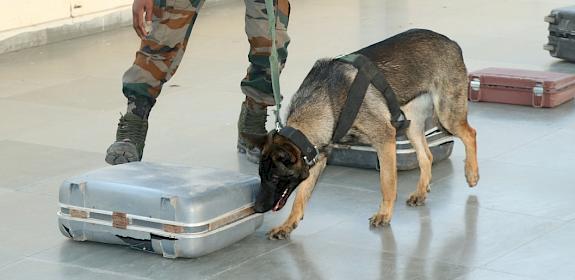
Portrait of Diva, a trained sniffer dog with Kenyan Wildlife Service (KWS) © Juozas Cernius / WWF-UK
i
Meet the super sniffers defending wild species from crime
These four-legged recruits are making a real impact in the ongoing efforts to combat crimes against wild species.
Dogs have an incredible sense of smell, capable of picking up even the tiniest traces of wild species in illicit products across shipping containers, airports, and the field. In our efforts to develop new ways to combat illegal trade, we’re working with WWF and authorities in India, Kenya, and beyond to unleash the remarkable abilities of wildlife sniffer dogs.
94 sniffer squads
are deployed with forest departments and railways protection force in India
sniffing out the smugglers
Wildlife detector dogs are proving invaluable in tackling wild species crimes.
They’re working in various ways, from helping rangers in National Parks in Africa and India catch poachers to detecting illicit products derived from wild species in airports.
These highly trained sniffer squads are essential in stopping poachers and traffickers in their tracks and ensuring justice for our wild species.
A wildlife sniffer dog searches postal sacks at an airport warehouse
i
sniffer dog deployment and training: from puppies to protectors
Each sniffer dog embarks on an essential training journey before stepping into their crucial role of protecting wild species.
The initial training phase starts when the dogs are between six and nine months old. During this time, they are paired with personal handlers to build a strong and trusting bond. Strategic exercises reinforce this bond, teaching the recruits to handle challenging situations and respond to specific commands.
In the second training phase, the dogs focus on learning skills related to detecting crimes against wild species, such as identifying illicit products and apprehending poachers. In the final stage of training, their skills are sharpened as they investigate crime scenes. As any student should, the trainees receive rewards for their good work.
Once the training is complete, the dogs are ready to enter the field and fulfil their duty of protecting threatened wild species!
Sniffer dog squads at a passing out ceremony © TRAFFIC
i




